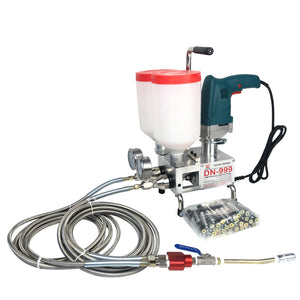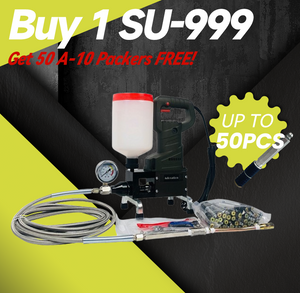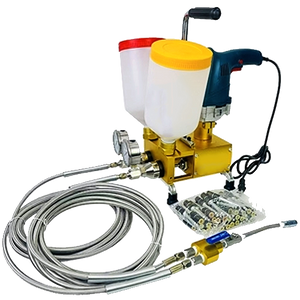The 2025 U.S. tariff actions from April to August have fundamentally reshaped the polyurethane (PU) and polyether polyol (PPG) supply chain. Beyond raising rates, these policies introduced daily uncertainty for producers, systems houses, converters, distributors, and buyers. Everyone is now asking: What will the duty be on the next shipment? Will it stack with other tariffs? Could Customs reinterpret origin after the fact? With effective rates fluctuating between 10% and 50%, and even exceeding 100% in stress scenarios, margins, lead times, and working capital all swing accordingly.
This analysis is designed to help decision-makers—both U.S. buyers and international suppliers—plan under uncertainty. It establishes price baselines, explains duty calculations in practical terms, translates them into P&L impact, and outlines likely trade-share shifts.
Policy Recap
The 2025 tariffs center on four key actions. The July 30 order on Brazil adds 40% on PU/PPG imports, with limited carve-outs for upstream commodities. The July 31 reciprocal reset applies country-specific adders: India +25%, Brazil +10%, and the EU up to a 15% top-up if MFN is below that threshold. Anti-evasion enforcement adds a potential +40% penalty for confirmed transshipments. The August 6 order on India imposes another +25% due to Russian oil purchases, stacking to roughly 50%. China currently benefits from a suspension of higher duties, keeping rates at 10% until November; operational planning treats China at 30%, with risks ranging from 34% to over 100% in a stress scenario. These four tiers define the duty framework referenced throughout this report.
Pricing Baselines and Calculation Approach
Market prices anchor analysis, but duties apply to customs value rather than delivered price. For CIF/CFR quotes, customs value can be approximated by subtracting a freight/insurance placeholder (e.g., $100/t). Ex-works quotations, typical in China, align closely with FOB/transaction value. For South America, Brazil’s anti-dumping (AD) deposits on Chinese polyols raise local import parity, while AD duties on U.S. suppliers support higher regional CFR quotes. These measures, combined, create what is referred to as the Brazil AD wall, keeping South American polyol prices structurally above India/SEA levels.
How U.S. Duties Are Calculated
The formula is straightforward:
Duty $/t = Customs value × (MFN + Additional EO + AD/CVD + Sec. 232)
Incremental EO layers from 2025 executive orders are applied on top of MFN and other overlays. Customs value serves as the base, with CIF/CFR minus freight or China ex-works prices approximating FOB/transaction value. This methodology allows buyers to translate tariff swings directly into landed cost.
How the Duty Stack Hits the Landed Cost
Landed cost equals the commercial price plus logistics and all applicable duties. Using midpoints for 2025 data:
-
China (flexible slabstock): $1,050–$1,150/t base; 30% duty adds $315–$345/t.
-
India: $1,125/t base; 50% stacked duty adds ≈ $563/t.
-
Brazil: $1,550/t base; 50% adds ≈ $775/t.
-
Southeast Asia (true origin): $1,100/t base; 19–20% adds $210–$220/t.
-
EU: $1,200/t customs value; 8.5% top-up ≈ $102/t.
These inputs make SEA and China (10–30%) the most competitive for commodity polyols, while India and Brazil are largely excluded from U.S. value-segment imports.
Upstream → Downstream Transmission
The 2025 duty framework shifts sourcing decisions and timing. In the U.S., procurement favors China and SEA for commodity grades. True-origin SEA shipments, like Vietnamese mattress programs, offer lower incremental duties than China (30%+) or India/Brazil (50%), provided plant-level documentation is airtight. EU remains relevant where performance and technical service justify the premium. South America sees Brazil’s AD wall sustaining regional price levels, limiting PRC imports. Enforcement risk adds another layer: confirmed transshipment triggers +40% punitive duties, which can erase margin advantages instantly.
Trade Diversion and Share Shifts (Next 3–6 Months)
Spot buys and short-cycle contracts will react fastest. Commodity polyols flow toward China for scale and speed, and toward SEA for duty efficiency. EU retains specialty/spec-locked segments, while India and Brazil redirect volumes to domestic or regional markets or leverage USMCA finishing to reduce U.S. duties. Within South America, China-origin remains accessible where no AD barrier exists. Dual sourcing, staggered shipments, and compliant routing are essential for maintaining supply and managing risk.
P&L Impact and Pricing Transmission
Tariffs now dominate margins more than short-term spot price moves. On a $1,100–$1,600/t customs value, each 10% duty adds roughly $110–$160/t (~$0.05–$0.07/lb). Swings of $200–$350/t in flexible foam can compress gross margins by 300–600 bps without rapid price adjustments. Stress scenarios (China ≥100%) force immediate rotation to SEA, EU, or domestic supply, with higher working capital and temporary margin pressure.
Country Lenses That Drive Decisions
-
Brazil: 50% duty excludes Brazil-origin PU/PPG from U.S. commodity segments; near-term focus pivots to Mercosur or USMCA finishing.
-
India: Similar 50% impact redirects exports to Asia, Middle East, and Africa; value mix dominates over volume until tariff clarity improves.
-
China: Operational 30% rate maintains competitiveness; negotiation outcomes (10–34% or stress ≥100%) directly affect sourcing.
-
EU: “Top-up to 15%” keeps specialty supply viable; premium service maintains relevance.
-
Southeast Asia: 19–20% duties provide a durable hedge to China for commodity grades if origin documentation is audit-ready.
Risk, Compliance, and the Operating Playbook
Policy timing (e.g., November China decision) and origin enforcement dominate execution risk. Mitigation requires staged shipments, flexible Incoterms, and plant-level origin verification. Best practices include embedding tariff pass-through clauses tied to HTS and origin, dual-sourcing across China, SEA, and EU, and maintaining an SKU–HTS–origin matrix for compliance and pricing transparency.
In conclusion, the 2025 tariff landscape has rewritten sourcing strategies for PU and PPG. China and Southeast Asia remain the most viable lanes for U.S. buyers, while India and Brazil face structural exclusion from commodity imports. The EU continues to serve specialty and high-spec niches. In a market defined by volatility, the ability to anticipate duty shifts, manage compliance, and adapt sourcing strategies is now critical.






0 comments